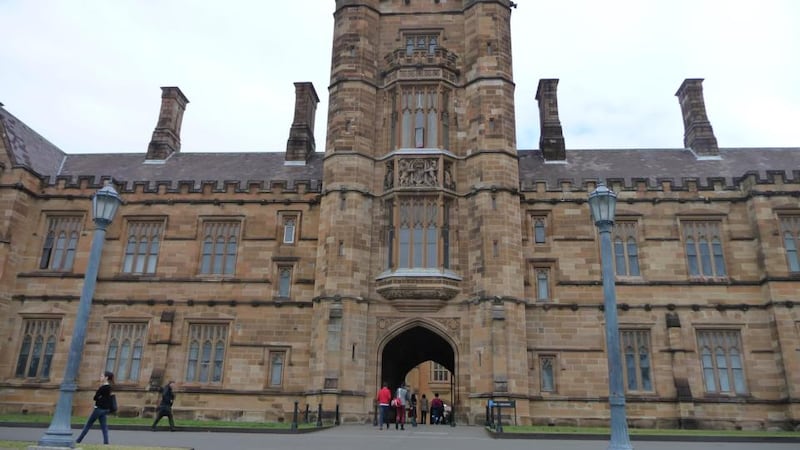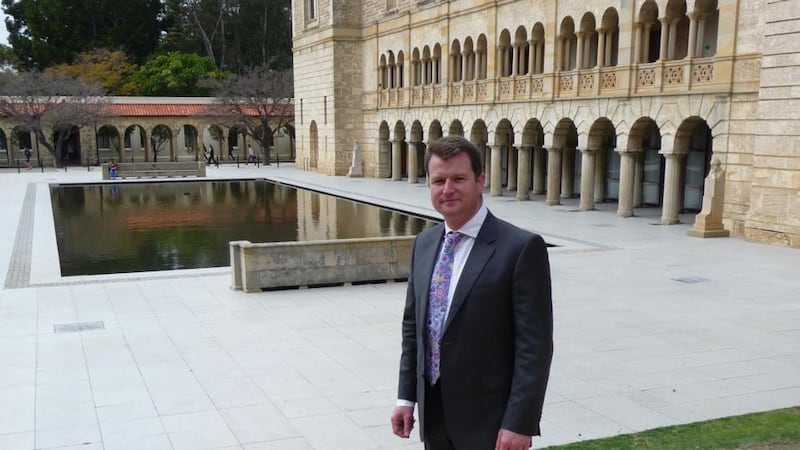Arriving early for meetings one morning at the University of Sydney, Australia’s oldest university, I took a stroll through the quadrangle at the centre of its campus. The calm was disturbed by the arrival of coaches full of Chinese second-level students, many with their families.
They spread through the campus, taking pictures and collecting literature. For many of them, attending an Australian higher- education institution was part of the family plan. Australian universities are hugely conscious of that. More than a fifth of their student population comes from overseas; Asia, particularly China, is their key market. Education services is Australia’s third-largest export industry, and the largest for the state of Victoria.
Faced with cuts in public funding during the 1990s, along with growing domestic demand, the country identified international students as a significant source of income, and they have come in their hundreds of thousands since.


The international students pay, on average, about Aus$27,000 (about €19,500) a year in fees, and, as a result, expect a high-quality service and to study in a university with a strong brand recognition. These students pay attention to university rankings and league tables; consequently, Australian universities are obsessed with the results of international rankings (the recent Times higher rankings saw Australian universities once again move up the tables).
As one academic said to me: “When recruiting in China, we could just as well have our ranking number on our T-shirts as our university name.”
Fees for domestic Australian students vary, depending on the type of course that is studied. The Australian commonwealth government subsidises programmes partially based on the extent to which the course is regarded as a national priority.
This means that the fee charged to maths, statistics and science students is a maximum of $4,429 (€3,200), while the maximum fee for those studying, say, medicine, law or commerce is $8,859 (€6,400).
The universities are now facing another significant cut in public funding, but to allow them to recoup the lost revenue, the government is proposing to remove the cap on fees. Ideologically, minister for education Christopher Pyne believes the market should determine what fees can be charged. Supporters of the view argue that increased competition and the fact that domestic students cannot be charged more than international students (already a highly competitive market) will ensure fees are controlled.
The older and more research-intensive universities (known as the Group of Eight) support the move. They believe that, by having the opportunity to generate additional revenue through more fees, they can pump it into research, improve their global rankings, and, in turn, attract even more international students: a “virtuous circle”.
Voices of caution
The country’s other 31 universities react with varying levels of caution. There are fears about increased competition from private providers, international players and even the further-education sector moving in to undercut university fees.
They also have serious concerns about the impact the policy will have on access for certain sectors and whether it is best serving Australia’s long-term development.
Australia still has a higher-education participation target of 40 per cent for its 18-year-olds, while we have achieved 60 per cent here.
Students won’t necessarily have to pay fees upfront, as is currently the position. The government’s higher-education loan programme (which replaced the higher- education contribution scheme, introduced in 1989) provides income contingent loans to students to cover the costs of their fees.
In 2013-2014, it loaned $6.3 billion (€4.5 billion) to higher-education students, domestic and international, as well as those on vocational and training programmes. Students don’t have to pay back these loans until they graduate and are working and earning more than $51,309 (about €37,000) per annum. It should be noted, however, that salary levels and the cost of living are higher down under than here.
A model for Ireland?
This system, originally introduced by a Labour government, has strong support across the universities. As it is under consideration in Ireland as a model for higher- education funding, we will benefit from Australia’s quarter century of experience.
Australia's 39 universities and other higher-education providers serve the diverse needs of a vast continent. Charles Sturt University, for example, has 11 campuses spread across New South Wales and in Canberra, with a specific focus on meeting the needs of rural and regional Australia. The campuses are located in a total area greater than the size of the island of Ireland.
It works successfully with the communities where the campuses are based to specifically meet local needs. It would serve as a useful model for a technological university that brings a number of regional institutes together. It works hard to ensure that no single campus takes priority over another and makes very effective use of video-conferencing and technology to address the challenges of different locations.
In Melbourne, a highly competitive city for higher-education students, Swinburne University chose to focus on key strategic areas such as physics and public policy development to distinguish itself from the larger Group of Eight universities of Monash and Melbourne.
Melbourne University reduced its number of undergraduate degree programmes to half a dozen to give students a broader education (a move followed by the University of Western Australia in Perth).
In a more competitive environment, one might imagine a stronger role for regulation, both to support that diversity of mission and direction as well as to guarantee the maintenance of standards. However, funding for the Tertiary Education Quality and Standards Agency has been slashed.
Australia is often the first mover in higher-education policy change. Many reforms have been successful. The current plans represent a revolution in funding but the long-term outcomes remain unclear.
Malcolm Byrne is head of communications with the Higher Education Authority. He recently spent more than six weeks in Australia on an Endeavour Fellowship, awarded by the Australian government, examining their higher-education system. The views he expresses are his own








